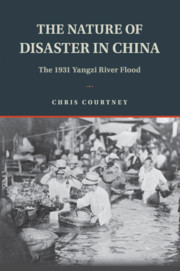Book contents
- The Nature of Disaster in China
- Studies in Environment and History
- The Nature of Disaster in China
- Copyright page
- Dedication
- Contents
- Figures
- Tables
- Acknowledgements
- Note on Language
- Introduction
- 1 The Long River 长江
- 2 The Flood Pulse
- 3 The Dragon King 龙王
- 4 A Sense of Disaster
- 5 Disaster Experts
- 6 The Floating Population
- Epilogue
- Appendix
- Bibliography
- Index
- Other Books in the Series
- References
Bibliography
Published online by Cambridge University Press: 01 February 2018
- The Nature of Disaster in China
- Studies in Environment and History
- The Nature of Disaster in China
- Copyright page
- Dedication
- Contents
- Figures
- Tables
- Acknowledgements
- Note on Language
- Introduction
- 1 The Long River 长江
- 2 The Flood Pulse
- 3 The Dragon King 龙王
- 4 A Sense of Disaster
- 5 Disaster Experts
- 6 The Floating Population
- Epilogue
- Appendix
- Bibliography
- Index
- Other Books in the Series
- References
- Type
- Chapter
- Information
- The Nature of Disaster in ChinaThe 1931 Yangzi River Flood, pp. 251 - 281Publisher: Cambridge University PressPrint publication year: 2018

